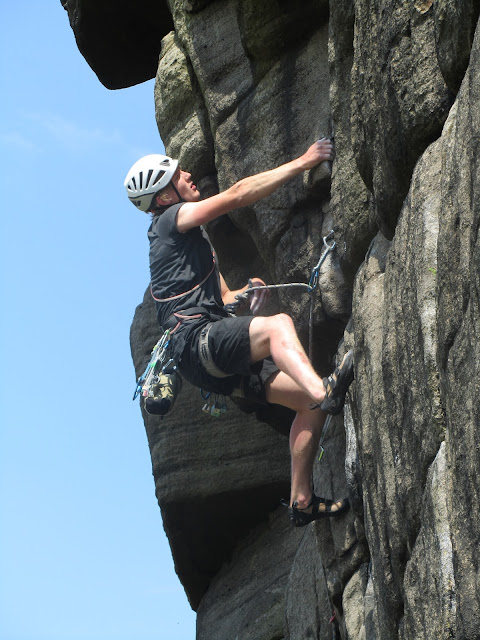This is from the top of Malham Cove, an 80 metre high, curved, limestone formation just north of the village of Malham in Yorkshire.
Millions of years ago, due to a fault line called the Mid Craven Fault, the land dropped, creating a 100 metre high cliff. Over the subsequent years, the limestone face has been worn away, eventually leaving the current curved crag.
This photo is taken from the other end of the curve, near to the top of the steps which descend to the valley floor.
The classic view of the Cove is from the bottom, showing the whole sweep of the curve. Far below me, I could actually see a whole cluster of people pointing cameras at the face. Unfortunately, I could also see the long line of steps and was all too well aware that the location of the car meant that what went down, would then have to come back up!
I just wasn't that dedicated. Sorry :)
(If you want to see the classic view, click here.)
Looking out from the top, the view was beautiful. Undulating green fields, separated by dry stone walls and dotted with sheep. Malham is just visible left of picture and little pockets of woodland complete the scene. This is typical limestone country; a landscape known as karst (where water has shaped the carbonate bedrock).
As you can see from the well trodden path running alongside Malham Beck, the Cove is a very popular destination!
The top of Malham Cove is a limestone pavement consisting of clints and grykes. The clints are the blocks and the grykes are the cracks (I have to look that up every time!).
Limestone has a calcium carbonate chemical base. Because of this, it is readily soluble. Grykes are formed when water runs down the vertical joints of the rock and causes the limestone to dissolve. This process is called carbonation. Over time, the grykes deepen and the clints are left standing proud between them.
Shade loving plants flourish in the damp of the grykes. Some of the ferns and wild plants which grow here are relatively rare. Unfortunately, all I managed to photograph were some nettles!





















,+Ian+and+Dad+May+'12+010.JPG)
,+Ian+and+Dad+May+'12+013.JPG)
,+Ian+and+Dad+May+'12+027.JPG)




























